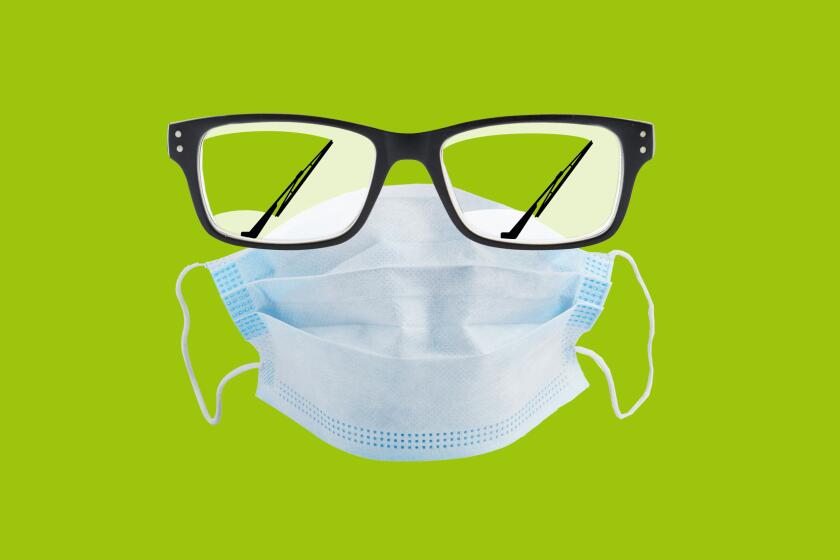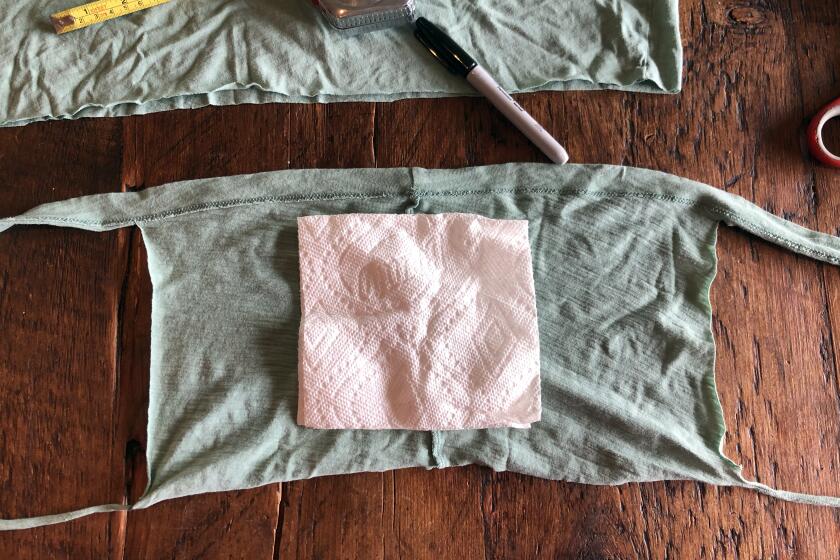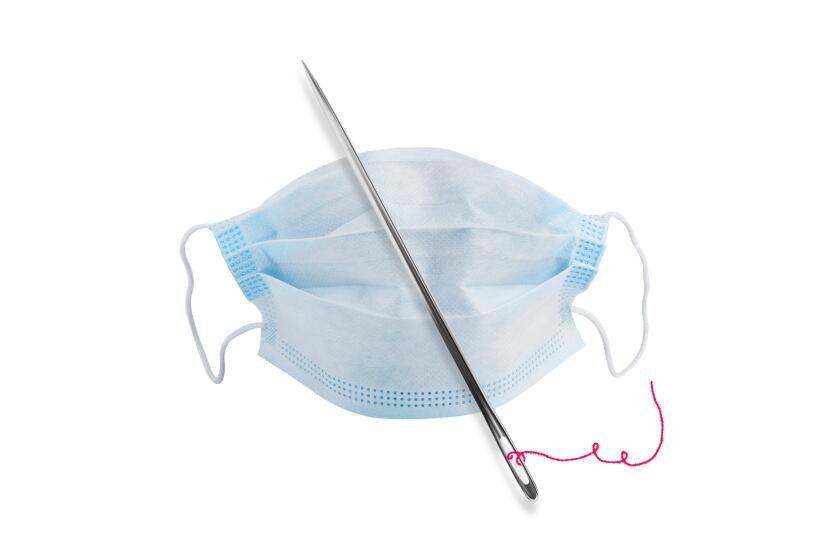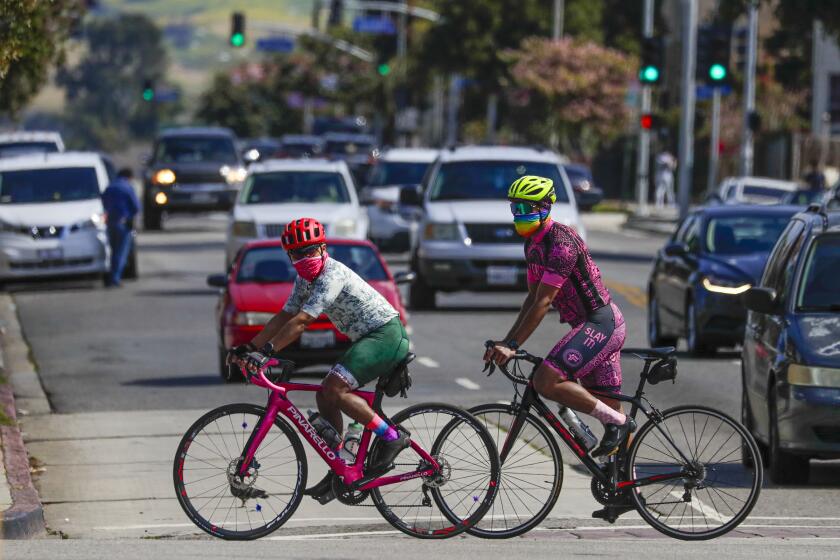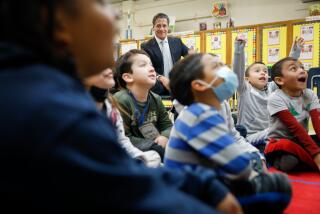Should kids wear face masks? We asked a pediatrician
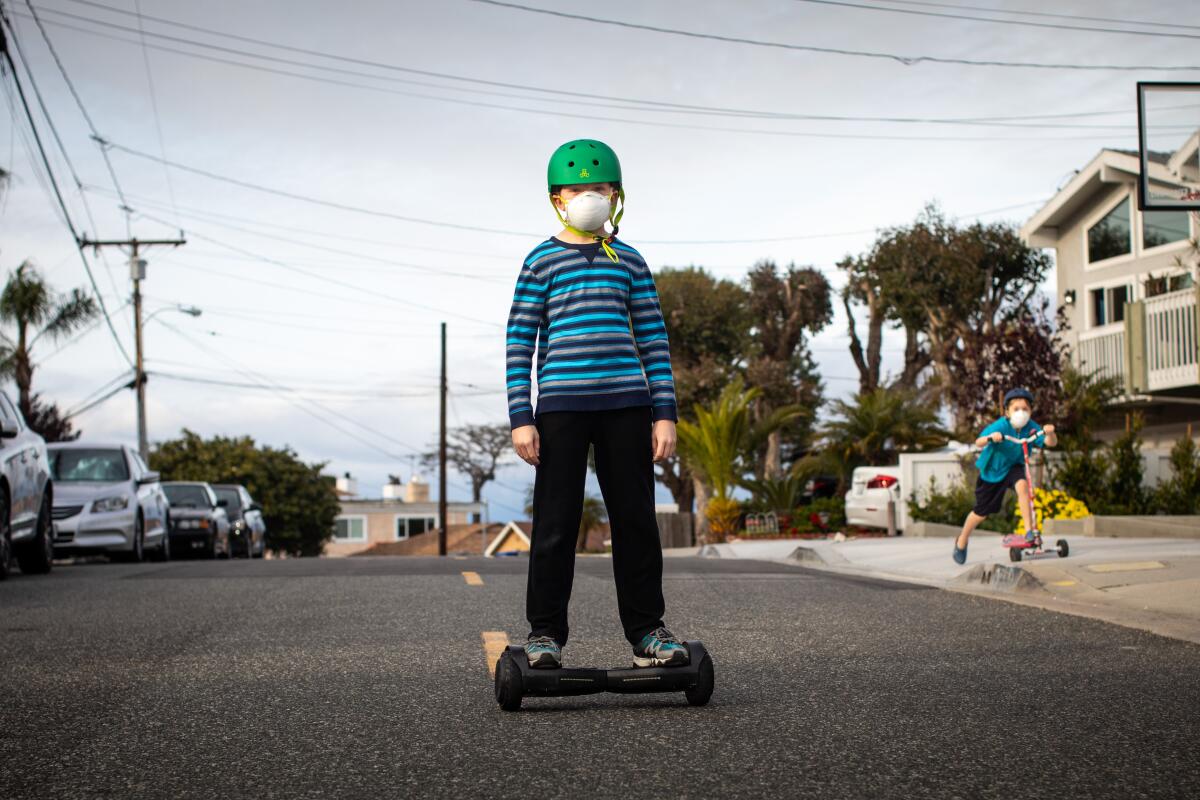
- Share via
As parents, we tend to want to make things better for our kids. But the seriousness of the novel coronavirus has forced us to talk to our children seriously about their safety and the safety of others.
Now that the CDC is recommending people wear cloth face coverings when venturing out in public, many parents are wondering if their children should wear masks when they go outside.
If they are over the age of 2, the answer is yes.
But that can be really hard for parents when kids don’t understand why masks are important, and why they can’t just go play outdoors and see their friends and grandparents.
Wearing masks will help minimize the spread of COVID-19. Here’s how to do it right.
Dr. Rachel J. Thornton, a practicing pediatrician and associate professor of pediatrics at Johns Hopkins School of Medicine, said in an interview conducted via email that it’s important for parents to be open and honest with their children when talking about face masks. And don’t presume they won’t want to wear one.
“Try to engage in open, honest, developmentally appropriate communication with your child about masks,” Thornton said. “Keep the conversation and concepts simple, at a level they can understand. Find a time to start the conversation with them about wearing a mask in advance of when you need them to wear it. This approach can help insure that the child has time to ask questions and rehearse the behavior if needed.”
In a pinch, a T-shirt can be used to create a no-sew mask to help slow the spread of the coronavirus.
Here, Thornton offers more tips and resources on how to talk to children about masks without frightening them.
The CDC does not recommend masks for children under age 2. What about kids under 10?
- In general, we want to be sure that any face coverings worn by a child do not pose a choking hazard or suffocation hazard. As long as the face covering does not pose a choking hazard for a child older than 2 and it can be worn safety without obstructing a child’s ability to breath, it is fine. The American Academy of Pediatrics has helpful information for parents, including a set of frequently asked questions about cloth face coverings for children during COVID-19, available on its parent/caregiver website.
Should children wear masks when they go on walks with their parents?
- A general rule of thumb is that a face covering is advised when there is a chance that you may not be able to fully maintain physical distancing as advised by the Centers for Disease Control and Prevention (that is, maintain six feet of distance from others). If a child is outdoors for a walk or play in an area where they can stay six feet away from others who are not members of their same household, guidance suggests a face covering is not needed. For example, if you are taking a family walk in your neighborhood. If it is necessary for a child to go somewhere where maintaining six feet of physical distance from others at all times is difficult, such as a necessary trip to the grocery store or pharmacy, then CDC guidelines for wearing a face covering would recommend using a nonmedical mask or face covering. It is important to note that wearing a face covering does not eliminate the need to adhere to physical distancing. It is still important, as much as possible, to stay at least six feet apart even when wearing a face covering to minimize the risk of transmission of COVID-19 and prevent the spread.
Any tips on getting a toddler/child to wear a mask without frightening them?
- Even young children can be taught healthy habits such as washing hands. Use simple, age-appropriate language is helpful in teaching them health habits like handwashing. Practicing or rehearsing the behavior can also help integrate it into a child’s routine. When talking with toddlers and young children about masks, try to keep the conversation calm; allow it to progress at their pace. Use language that is developmentally appropriate and direct. Encourage children to ask questions and share what they know and how they feel.
- Establishing consistent routines, rehearsing and reviewing what will happen next, and giving children enough time to transition between activities can all help children with mastery and reduce their level of anxiety in new experiences.
- Try to resist the urge to assume that your child is going to respond negatively to wearing a mask. Instead, introduce the idea and ask them what they think. They may be excited about wearing a mask with a fun pattern or their favorite color. It may also be helpful to give them an opportunity to practice wearing a mask at home and watch you practice wearing your nonmedical mask or face covering so they can get used to it.
- Making masks at home for your family or to donate to others can be an activity that gives children a sense that they are staying safe and helping others.
- It is important to note that a face covering can be distracting to children and cause them to touch their face more than usual. The guidance from the American Academy of Pediatrics available at healthychildren.org suggests reconsidering the use of a cloth face mask when it causes your child to touch their face more frequently than when they are not wearing it.
DIY coronavirus mask instructions from crafters and doctors.
Any breathing issues with kids and masks that parents should know about?
- When a mask impedes a child’s ability to breathe normally, or when they are unable to remove the mask on their own if needed, the CDC recommends that a face covering should not be worn. These are important factors to keep in mind. Any child who is incapacitated or unable to remove the covering on their own if needed should not wear cloth face coverings.
Do kids have any special needs, like wearing a mask with a filter?
- The Centers for Disease Control and Prevention recommends cloth face coverings. The American Academy of Pediatrics recommendations are similar. For most people, these cloth face coverings would be most appropriate in a community setting where physical distancing may not be possible. There may be specific circumstances where another type of mask is recommended. For children with severe or chronic illnesses including being immuno-compromised or having significant lung disease or other conditions, you should speak directly with your child’s healthcare provider for guidance on the most appropriate type and approach to wearing a face covering for their needs.
While many parts of California are requiring face coverings to be worn for essential business, some cities and counties have taken it a step further.
What if my child is sick and we need to go to the doctor? Are the protocols different now?
- If your child is experiencing a medical emergency, you should seek emergency medical attention by calling 911 and going to the emergency department for evaluation and treatment.
- If your child is sick with mild symptoms that you are able to manage at home, you should call your child’s healthcare provider to discuss the specific circumstances surrounding their illness and the symptoms they are experiencing. This way, your child’s healthcare provider can give specific recommendations for your child and can make recommendations about whether your child should be seen in person for care, whether a video visit or telehealth visit could be used, or whether a specific treatment would be recommended based on the illness symptoms your child has. Calling your child’s medical provider with questions or for guidance can help insure your child gets the care they need in the right location and with the most appropriate precautions in place to prevent risk of exposure or transmission of COVID-19.
More to Read
Sign up for The Wild
We’ll help you find the best places to hike, bike and run, as well as the perfect silent spots for meditation and yoga.
You may occasionally receive promotional content from the Los Angeles Times.
